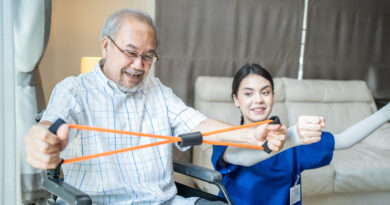Recognizing Early Warning Signs of Clinical Deterioration – Essential Nursing Interventions in Modern Healthcare
In modern healthcare, recognizing and responding to the early warning signs of clinical deterioration in patients is a crucial aspect of nursing care. Clinical deterioration can occur suddenly, leading to severe health complications, prolonged hospital stays, or even death if not addressed in time. With the rise of increasingly complex medical conditions and patient care environments, the role of nurses in detecting and acting on early warning signs has never been more critical.
Also Read: Technicalities of Neurology Clinical Trials
This article explores the key signs of clinical deterioration, discusses modern nursing interventions, and highlights the latest strategies employed to improve patient outcomes.
Timely Intervention
Clinical deterioration refers to a patient’s condition progressively worsening, often marked by subtle physiological changes. Early detection of these signs allows healthcare professionals to intervene before a patient enters a critical phase. In nursing, timely identification of clinical deterioration is essential for preventing adverse outcomes, such as cardiac arrest, respiratory failure, and severe infections.
Modern healthcare systems recognize the need for early interventions. Various tools, such as Early Warning Score (EWS) systems, have been developed to help nurses assess patients more effectively. However, successful intervention still depends largely on the vigilance, skill, and knowledge of nursing professionals.
Key Early Warning Signs of Clinical Deterioration
The early warning signs of clinical deterioration can often be subtle, making it difficult to recognize them without proper attention and experience. The following signs should prompt immediate assessment and action:
1. Altered Vital Signs
- Abnormal heart rate: A sudden increase (tachycardia) or decrease (bradycardia) in heart rate could indicate the onset of critical issues like sepsis, arrhythmias, or heart failure.
- Blood pressure fluctuations: A rapid drop in blood pressure may signal hypovolemia or hemorrhage, while an increase could suggest hypertension or stress.
- Respiratory rate changes: Increased respiratory rates may indicate distress or oxygen deprivation, while slowed breathing could precede respiratory failure.
- Oxygen saturation levels: Low oxygen saturation (SpO2) levels may point to impending respiratory failure or other oxygenation issues.
2. Altered Mental Status
- Changes in mental status, such as confusion, disorientation, lethargy, or sudden agitation, can be early signs of hypoxia, electrolyte imbalances, or neurological compromise.
3. Decreased Urine Output
- A significant reduction in urine output could indicate kidney failure, dehydration, or shock. This is often one of the earliest physiological signs of systemic deterioration.
4. Pain and Restlessness
- Unexplained pain, particularly in the chest or abdomen, along with restlessness or agitation, may precede more serious conditions such as myocardial infarction or acute gastrointestinal emergencies.
5. Cyanosis and Pallor
- Visible cyanosis (bluish tint to skin or lips) or pallor may suggest impaired circulation or oxygenation, often indicating serious cardiovascular or respiratory conditions.
The Role of Nursing in Recognizing Clinical Deterioration
Nurses are the frontline responders when it comes to monitoring and identifying the first signs of patient decline. Unlike other healthcare professionals, nurses spend more time with patients, offering them the unique advantage of observing changes in their condition over time. Recognizing early warning signs requires a combination of experience, clinical judgment, and the ability to interpret physiological data.
1. Frequent Monitoring and Assessment
- Regular patient assessments, including vital signs, pain levels, and mental status checks, are essential in detecting early warning signs. In many institutions, nurses are required to perform these assessments at least every four hours, with more frequent checks for critically ill patients.
2. Early Warning Systems (EWS)
- Early Warning Systems are widely used in hospitals to assist nurses in identifying patients at risk of deterioration. EWS calculates a score based on key physiological parameters, such as heart rate, blood pressure, and respiratory rate. A higher score triggers a call for immediate medical attention.
- NEWS2 (National Early Warning Score 2) is an updated system used in many countries to standardize the approach to identifying clinical deterioration.
3. Patient Advocacy and Communication
- Nurses play a key role in advocating for their patients. When signs of deterioration are detected, prompt communication with other healthcare providers is critical. Nurses must escalate concerns quickly and ensure that appropriate interventions are implemented.
4. Use of Technology
- Telemetry and continuous monitoring systems: Advances in technology have made continuous monitoring more accessible, particularly in critical care settings. Real-time data from telemetry systems can provide early indications of changes in a patient’s cardiac or respiratory status, allowing for quicker interventions.
- Remote monitoring: In some settings, especially during the COVID-19 pandemic, remote patient monitoring became more common. Nurses could track patient vitals remotely, enabling earlier detection of problems in home healthcare or outpatient settings.
Also Read: Ethics and Types of Dermatology Clinical Trials
Nursing Interventions in Response to Clinical Deterioration
Once clinical deterioration is recognized, prompt and appropriate interventions are essential to stabilize the patient. Nurses, often working with multidisciplinary teams, implement a variety of strategies depending on the patient’s condition. Here are some key nursing interventions:
1. Immediate Resuscitation Efforts
- For patients showing signs of life-threatening deterioration, such as cardiac arrest or severe respiratory distress, immediate resuscitation efforts, including CPR (cardiopulmonary resuscitation) or intubation, may be required. Nurses trained in Advanced Cardiac Life Support (ACLS) play a crucial role in these emergency scenarios.
2. Oxygen Therapy
- For patients experiencing respiratory distress or low oxygen saturation, administering supplemental oxygen is often one of the first interventions. Nurses are responsible for monitoring the patient’s oxygen levels and titrating oxygen delivery to maintain adequate oxygenation.
3. Intravenous Fluids and Medications
- In cases of hypovolemia or sepsis, intravenous fluids may be necessary to stabilize blood pressure and restore perfusion. Nurses administer these fluids and monitor the patient’s response, adjusting the flow rate as needed.
- Medications, such as vasopressors, may also be administered in response to worsening blood pressure or heart function.
4. Positioning and Airway Management
- Proper patient positioning can often alleviate symptoms of respiratory distress. Nurses are trained to position patients to optimize airflow and prevent airway obstruction. For critically ill patients, managing the airway and ensuring it remains open is a priority.
5. Multidisciplinary Collaboration
- Nurses must communicate effectively with other members of the healthcare team, including physicians, respiratory therapists, and pharmacists. A coordinated approach is essential for stabilizing patients, especially in rapidly deteriorating conditions.
Challenges in Early Detection and Nursing Response
Despite the importance of early detection, several challenges exist within healthcare settings that can impact timely nursing interventions:
1. High Patient-to-Nurse Ratios
- In some healthcare environments, especially in understaffed hospitals, nurses may have too many patients under their care, limiting the amount of time they can spend monitoring each one. This can lead to delays in detecting clinical deterioration.
2. Burnout and Stress
- Nurses working in high-stress environments, such as emergency departments or intensive care units, may experience burnout. This can affect their ability to remain vigilant and respond to subtle signs of deterioration.
3. Lack of Training
- In some cases, nurses may not receive adequate training in using early warning systems or may lack confidence in escalating concerns. Ongoing education and simulation training are necessary to keep nurses up to date with the latest protocols.
Recent Advancements and Innovations
The growing recognition of the importance of early intervention has led to several advancements in healthcare technologies and protocols:
1. Artificial Intelligence and Predictive Analytics
- Hospitals are increasingly adopting artificial intelligence (AI) tools to predict clinical deterioration based on large datasets of patient information. These AI systems analyze subtle patterns in vital signs, lab results, and patient history to provide early alerts to healthcare providers.
2. Wearable Technology
- Wearable devices are being used to continuously monitor patient vitals, even in outpatient settings. These devices can detect changes in heart rate, respiratory rate, and oxygen levels, providing real-time data that alerts nurses to potential issues before they become critical.
3. Telemedicine Integration
- Telemedicine platforms allow nurses to remotely monitor patients, particularly those in home care or rural settings. This technology can be lifesaving for patients with chronic conditions who are at risk of sudden deterioration.
Interesting Article: 15 Jobs in Healthcare Sector You Can Get Without a College Degree
Future of Nursing in Detecting Clinical Deterioration
Nursing professionals are at the heart of early detection and intervention for clinical deterioration. As healthcare systems evolve, so too must the tools, training, and support available to nurses. The integration of technology, from early warning systems to AI and wearable devices, will play a crucial role in improving outcomes for patients at risk of deterioration. However, these advancements must be coupled with adequate staffing, continued education, and a strong culture of teamwork and communication.
By staying informed about the latest strategies and leveraging both traditional clinical skills and modern technology, nurses can continue to make life-saving interventions and ensure the best possible care for their patients.




